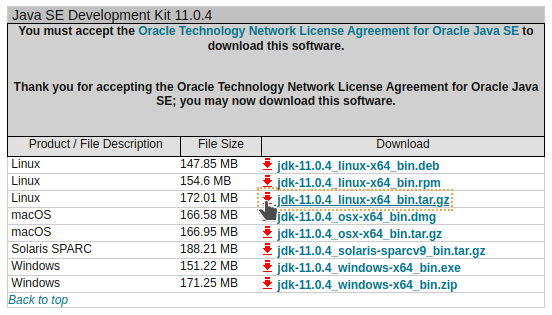Last updated: June 14, 2016

How to reinstall Java 6 on Mac OS X
How to uninstall Oracle Java 7
- Java for OS X 2015-001 installs the legacy Java SE 6 runtime. This package is exclusively intended for support of legacy software, and installs the same deprecated version of Java SE 6 included in the 2013-005 release. Jul 03, 2018 To open “Eclipse” you need to install the legacy Java SE 6.
- Java se 6 mac free download - Java 2 SE, Apple Java for OS X 10.6, Java Update for Mac OS X 10.3.9, and many more programs.
Java is a free software currently developed by Oracle Corporation. Apple provided its own implementation of Java for Mac OS X until October, 2012. At that time, the Apple verison of Java 6 was removed during an OS X update, and replaced with the Oracle-supplied version of Java 7.

Java SE 7 Update 6 marks Oracle’s first full JDK and JRE release on Mac OS X. All of the features and functionality available for other OSs are now available on Mac, including the JavaFX rich client platform. Java developers using Macs can download Oracle’s JDK for Mac OS.
This article pertains to the Java Runtime Environment (JRE) program installed on your computer that is used to run Java applets encountered in your web browser. There are a variety of reasons why a Mac user would want to remove Oracle’s version of Java from their Mac, and reinstall Java 6 on Mac instead. To reinstall Java 6 on Mac OS X, you should first uninstall Oracle Java 7 or 8 from your Mac. The steps below explain how to uninstall Oracle Java from your Mac. Please note that to uninstall Java 7, you must have Administrator privileges.
- Click on the Finder icon located in your dock
- Click on Applications tab on the sidebar
- In the Search box enter: JavaAppletPlugin.plugin
- This will find the JavaAppletPlugin.plugin file
- Right click on JavaAppletPlugin.plugin and select Move to Trash
Alternatively, if you are familiar with using the Mac’s Terminal utility with Administrator privileges as root or by using sudo, you may copy/paste the command line below to uninstall Oracle Java 7:
How to Restore Apple’s Java 6 after uninstalling Oracle Java 7
If you updated your Mac to Oracle Java 7 or 8, and it has created an unforeseen issue, you may continue to use Apple’s
Java on your Mac by restoring it. Please note that to restore Apple’s Java, you must have Administrator privileges and execute the command either as root or by using sudo.
- Click on the Finder icon located in your dock
- Click on Applications tab on sidebar
- Click on the Utilities folder
- Double-click on the Terminal icon
- In the Terminal window Copy and Paste the command below:
Once you have uninstalled Oracle’s Java, and restored Apple’s Java 6, you may verify that your Mac is running the expected Java version by visiting the Java.com web site.
If this article helped you, please consider leaving us a Bitcoin tip:
16U6TZfMExxCCVuptXirEp3YVKxgBC12GQ
Tech Help Knowledgebase creates how-to articles and video tutorials for common issues, and provides technical support for the categories covered by our site.
Get Support.
Java Se 6 Runtime Mac Os Catalina
While launching, Dreamweaver (13.2 and earlier versions) prompts you to install Java SE 6 Runtime.
Java SE 6/SE 7 Runtime is installed on the computer.
Note:
In Dreamweaver 2014, the prompt does not appear when you launch Dreamweaver. However, you are prompted to install Java SE 6 runtime while logging in to PhoneGap Build service (Site > PhoneGap Build Service > PhoneGap Build Service).
In the pop-up window that appears, click Install and follow the onscreen instructions to install Java SE 6 Runtime.
Note:

In Dreamweaver 2014, you can't log in to PhoneGap Build service without installing Java SE 6 Runtime.
Important: Ensure that you install Java SE 6 Runtime only by clicking Install in the pop-up window. If you install Java SE 6 or 7 Runtime through any other means (for example, by directly accessing Java.com), Dreamweaver could still display the prompt.
Even if you have installed Java SE 7 Runtime, you still need to install Java SE 6 Runtime as described above.
If you continue to see the prompt even after installing Java SE 6 Runtime as described above, perform the following steps:
Dreamweaver displays such a prompt because, when you update to Mac OS 10.9, Java SE 6 Runtime on your computer gets uninstalled.
Java 6 Se For Mac Os High Sierra
More like this
